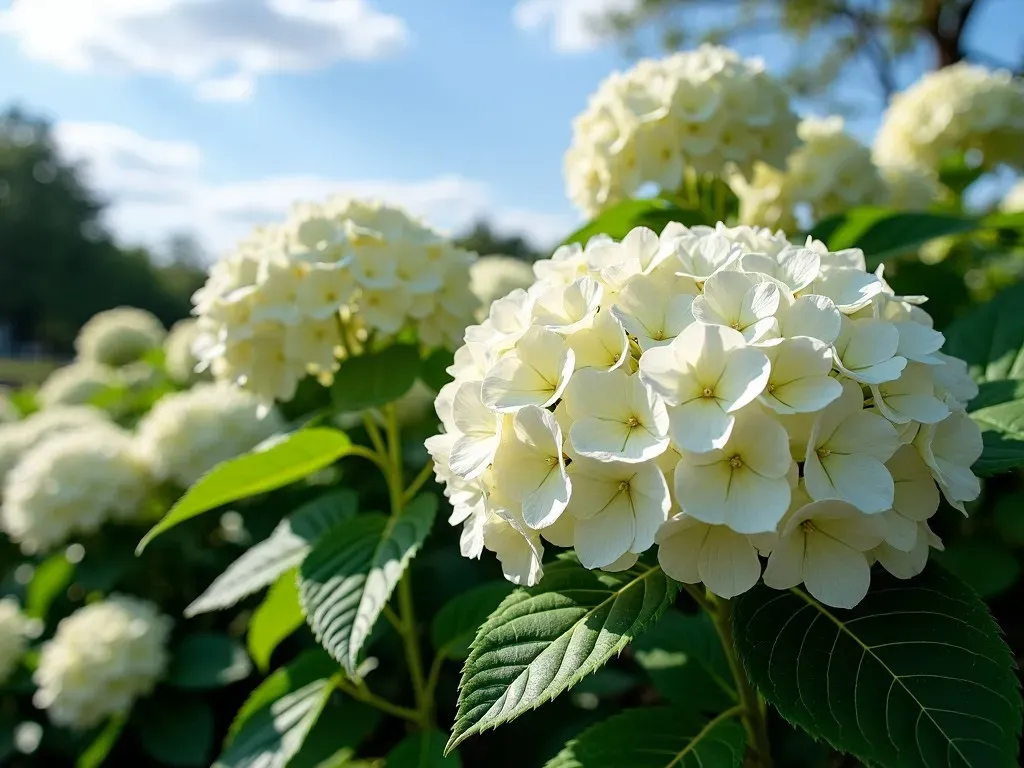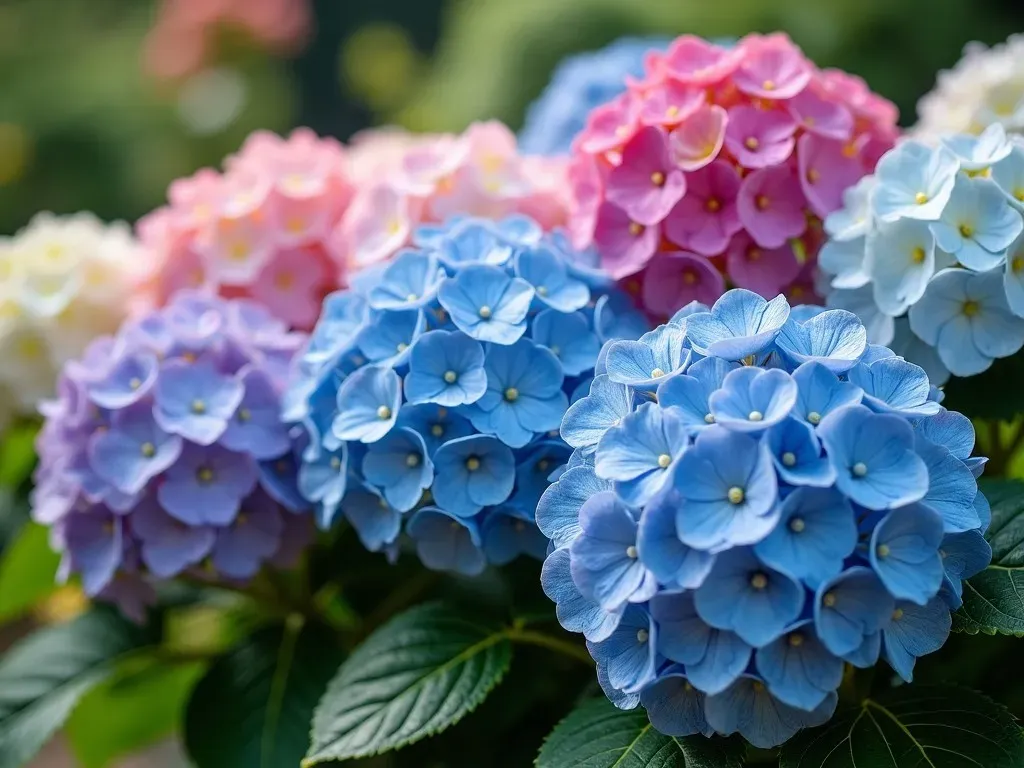Hydrangeas are cherished in gardens for their beautiful blooms and lush foliage. Among the many varieties, the biggest hydrangeas stand out, offering a spectacular display that can elevate any garden space. The biggest hydrangea can grow to impressive heights and produce enormous flower heads, making them a focal point in landscaping. In this article, we dive into the world of giant hydrangeas, exploring their varieties, care needs, and tips for cultivating these magnificent plants.
Characteristics of the Biggest Hydrangeas
When we refer to the "biggest hydrangeas," we typically mean hydrangea varieties that either grow to a significant height or produce large flower clusters. These plants are primarily known for their impressive size and vibrant colors.
Common Types of Large Hydrangeas
Here’s a quick overview of some of the most well-known giant hydrangeas:
| Hydrangea Type | Height | Flower Size | Notable Features |
|---|---|---|---|
| hydrangea macrophylla (Bigleaf Hydrangea) | 3-10 ft | Up to 12 in | Changes color based on soil pH; large, rounded blooms. |
| Hydrangea paniculata (Panicle Hydrangea) | 4-10 ft | Up to 15 in | Cone-shaped flowers; blooms later in the season. |
| Hydrangea quercifolia (Oakleaf Hydrangea) | 4-8 ft | Up to 12 in | Unique oak-like leaves; stunning fall color. |
| Hydrangea anomala (Climbing Hydrangea) | Up to 50 ft | 3-4 in | Climbing ability; excellent for vertical gardens. |
The Largest Hydrangeas
Among the largest hydrangeas, the Hydrangea ‘Phantom’ and Hydrangea ‘Avant Garde’ are particularly noteworthy. The ‘Phantom’ panicle hydrangea produces extraordinary flower heads up to 15 inches long, while the ‘Avant Garde’ holds the title for the world’s largest flowering hydrangea.

Facts and Figures
- Height: The tallest types of hydrangeas can grow up to 50 ft when training as a climbing plant.
- Spread: Most varieties can spread equally, matching their height (typically 3-8 ft).
- Bloom Duration: Many giant hydrangea varieties bloom from late spring to early fall.
How to Care for Giant Hydrangeas
Caring for large hydrangea bushes requires understanding their specific needs in terms of light, water, and soil conditions.
Light Requirements
- Hydrangeas thrive in partial shade to full sun. Too much direct sunlight can scorch the leaves, while too little can hinder blooming. It’s recommended to place them where they can get morning sun and afternoon shade.
Soil Conditions
- Well-drained, rich, and moist soil is crucial for giant hydrangeas. Sandy loam or clay loam with a pH level appropriate for the desired flower color (acidic for blue, neutral for pink) should be maintained.
Watering Needs
- Hydrangeas prefer consistently moist soil. Deep watering once a week is often sufficient. Avoid overhead watering to prevent fungal diseases.

Pruning Techniques
- Most hydrangeas require minimal pruning; however, removing dead or crossed branches after blooming can encourage stronger growth. It’s essential to know the type of hydrangea you have to determine the right pruning schedule and techniques.
Varieties of the Biggest Hydrangeas
In addition to the ‘Phantom’ and ‘Avant Garde,’ here are some notable varieties:
- Hydrangea ‘Bobo’: Compact size (3 ft), but produces large blooms.
- Hydrangea ‘Endless Summer’: Known for its re-blooming nature, providing flowers from spring to fall.
- Hydrangea ‘Quick Fire’: One of the earliest bloomer panicle hydrangeas, with upright growth.
Growth Chart
Here is a summarized growth chart for some popular hydrangea varieties:
| Variety Name | Height | Flower Color(s) | Bloom Season |
|---|---|---|---|
| Bigleaf | 3-10 ft | Pink, Blue | Late spring – fall |
| Panicle | 4-10 ft | White, Pink | Mid-summer – fall |
| Oakleaf | 4-8 ft | White to Pink | Early summer – fall |
| Climbing | Up to 50 ft | White | Summer |
Common Issues with Giant Hydrangeas
Like any plant, giant hydrangeas can encounter issues. Here are a few common problems and their solutions:
Pests and Diseases
- Aphids: These small insects can affect new growth. Spray with insecticidal soap to mitigate.
- Powdery Mildew: A fungal disease appearing as white powder on leaves is often caused by overcrowding and humidity. Improve air circulation and use fungicides as needed.
Color Change Issues
- Changes in blossom color are often due to soil pH. To achieve blue blooms, ensure acidic conditions and consider adding aluminum sulfate. For pink blooms, neutralizing soil with lime may help.

Frequently Asked Questions (FAQ)
1. What is the best time to plant giant hydrangeas?
The best time to plant hydrangeas is in the early spring or fall when temperatures are mild.
2. How quickly do giant hydrangeas grow?
Most varieties will grow about 1-2 feet per year, given proper care and conditions.
3. Can giant hydrangeas thrive in pots?
Yes, many giant hydrangeas can be grown in pots, but ensure the container is large enough to accommodate their root systems.
4. Do giant hydrangeas lose their leaves in winter?
Yes, most hydrangeas are deciduous and will lose their leaves in the fall, but their stems can add winter interest to the garden.
5. How do I ensure my hydrangeas bloom every year?
To promote yearly blooming, ensure proper pruning, adequate sunlight, and consistent watering. Choosing the right variety for your climate and soil conditions can also help.
For more detailed information on Hydrangea Care and varieties, visit Gardening Express.
By understanding the characteristics and care required for the biggest hydrangeas, you can cultivate a spectacular array of blooms that enhance your garden and provide enjoyment throughout the growing season. Whether adding a giant hydrangea as a centerpiece or as a part of a mixed border, these stunning plants are sure to impress.


